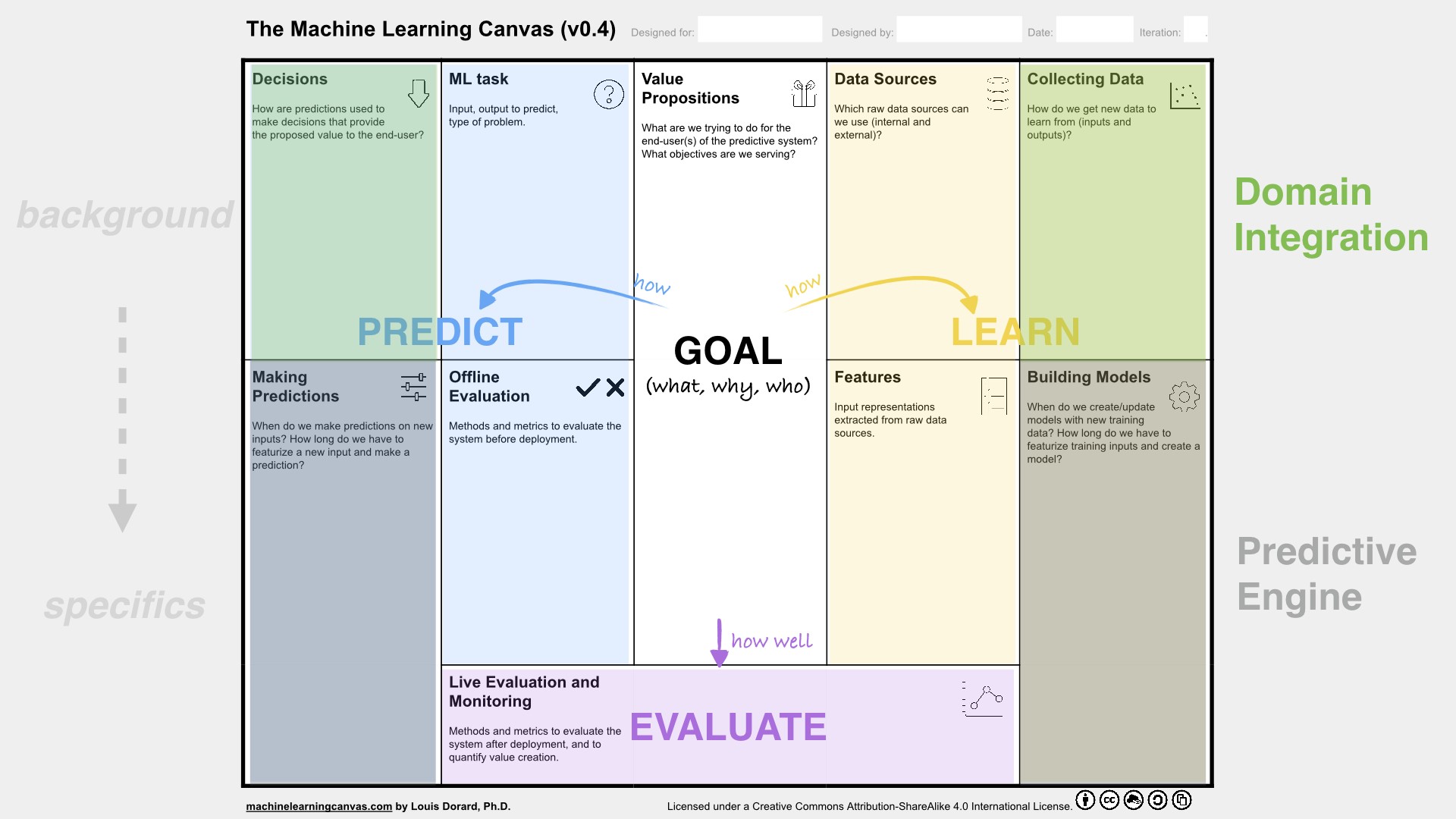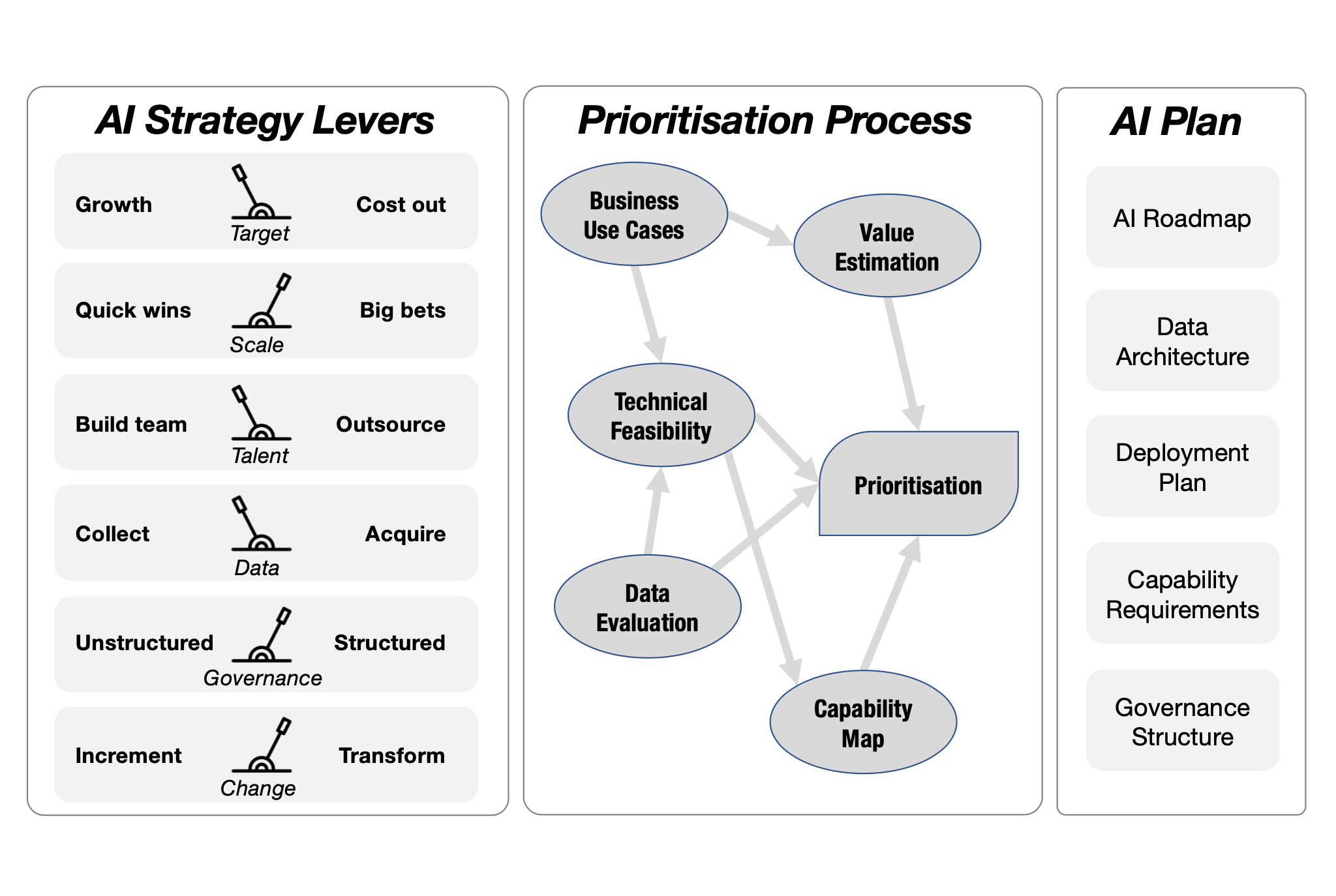You have set strategic goals for AI in your organisation, but how do you turn a strategy into a successful implementation plan?
Recently the Boston Consulting Group and Accenture both published studies analysing how companies successfully adopted AI in business. Both of these publications emphasised the need to choose the right set of AI-enabled applications as a critical factor in the long-term success of a company’s AI strategies.
MIT and BCG interviewed more than 2,500 senior executives across the world and highlighted the following 6 key approaches:
- Integrate AI into business strategy
- Prioritise revenue growth over cost reduction
- Take bigger risks to achieve greater impact
- Align AI development with its usage
- Treat AI as a business transformation
- Invest in AI talent, governance, and process change
More detail is available from BCG
Accenture based their report on more than 1,500 C-Suite executives globally, investigating what factors allowed them to scale AI in their businesses. They identified the following factors as driving the strategic scalable adoption of AI:
- CEO focus with the advanced analytics and data team solving big rock problems
- Multi-disciplinary teams of 200+ specialists championed by a Chief AI, Data or Analytics Officer
- Ability to tune out data noise and focus on essentials
- Intelligent automation and predictive reporting
- Catch up on digital/AI/data asset debt
- Experimental mindset achieving scale and returns
More detail is available from Accenture
Companies can set the strategic levers of their AI strategy in different ways - our key take aways from the above reports are that focusing on business and key business applications is very important; understanding culture and capability is equally important; and while technology is an enabler for value, it doesn’t create value itself. Recognising this, even though AI is very technology heavy, is a key requirement for success.
Where things often falls apart is in the movement from an AI strategy to an AI plan. Often companies lack the capability to understand what is truly feasible with AI, so they miss key business opportunities, or misjudge the difficulty or challenges that face implementation of the AI strategy. Other times the focus is solely on feasible technology, but the capability and the company structures in which those capabilities are embedded are neglected.
What is required to get over these failure modes is a very careful and structured approach to building an AI implementation plan.
Components of an AI plan
An AI plan requires 4 components as inputs:
The first is a list of business applications of AI - this is a catalog of business driven use cases, along with a clear description of the value generated or the cost driven out of the business by the successful deployment of that use case.
The second is listing up the available data that can be used to activate these AI use cases for each data source - be it internal or external. Building a clear view on the quality in coverage, relevance and bias in this data is essential.
The third is an evaluation of the capability that is available for activating those use cases. In a previous post we highlighted the five capabilities required for effective and safe use of AI and ML in an organisation - capability planning requires addressing how each of these will be acquired.
The fourth is an assessment of the feasibility of solving the business use case with the available data and capabilities using AI technology. This step is fraught with the potential for error and typically requires expertise in a wide range of AI and machine learning learning technologies. It is very easy to be over confident in what AI and can achieve, and it is also easy to assume that something is impossible when it is not.
Armed with these four things, it is then possible to make a prioritised plan for the execution of your AI strategy, selecting the right mix of:
- Growth opportunities vs cost reductions
- Quick wins to show progress in the short-term and major efforts to show value in the long term
- Insourcing and outsourcing to build the right capability mix in the organisation
- Technology platforms that support your actual plan rather than a generic general purpose approach
- Acquisition or collection of key data assets to enable learning within selected AI systems
- Appropriate controls and safeguards in the use of AI in your organisation
Planning tools
Another common failure in AI and ML planning is to consider the development of an AI business use case and its transition into a production system as a “project”. The lifecycle of an AI model, in particular the need for continuous iteration and evaluation, make it much closer to a product than a project.
As such, modern agile planning tools can be adapted to the planning and management of AI business use cases. Building on other Lean Canvas approaches, the Machine Learning Canvas was created by Louis Dorard to distil an ML business value proposition down to a single page. It can be used to keep everyone, including data scientists, software engineers, product designers, technical and business managers, literally on the same page.

The ML Canvas starts in the middle of the page with the goal, where the Value Propositions for the end-users are laid out. The left side of the page focuses on the Predictions to be done, how they will be done, and then what decisions will be made using them. The right side focuses on how the Learning will done. That is, what data will be used and what features need to be derived, and what models need to be built. Lastly, the bottom of the page addresses the question of Evaluation, and makes the distinction between offline evaluation and the ongoing live evaluation and monitoring that is required.
The ML Canvas is licensed under the Creative Commons and can be accessed at machinelearningcanvas.com
In Conclusion
Mapping your business problems into AI products, strictly assessing their feasibility, and mapping their requirements against the human and technical capabilities, as well as the data needed to bring them to fruition will lead you to a de-risked plan for adopting AI into your business.
Taking such a structured approach will place you in the success quadrants identified by both BCG and Accenture in their surveys of thousands of companies.
